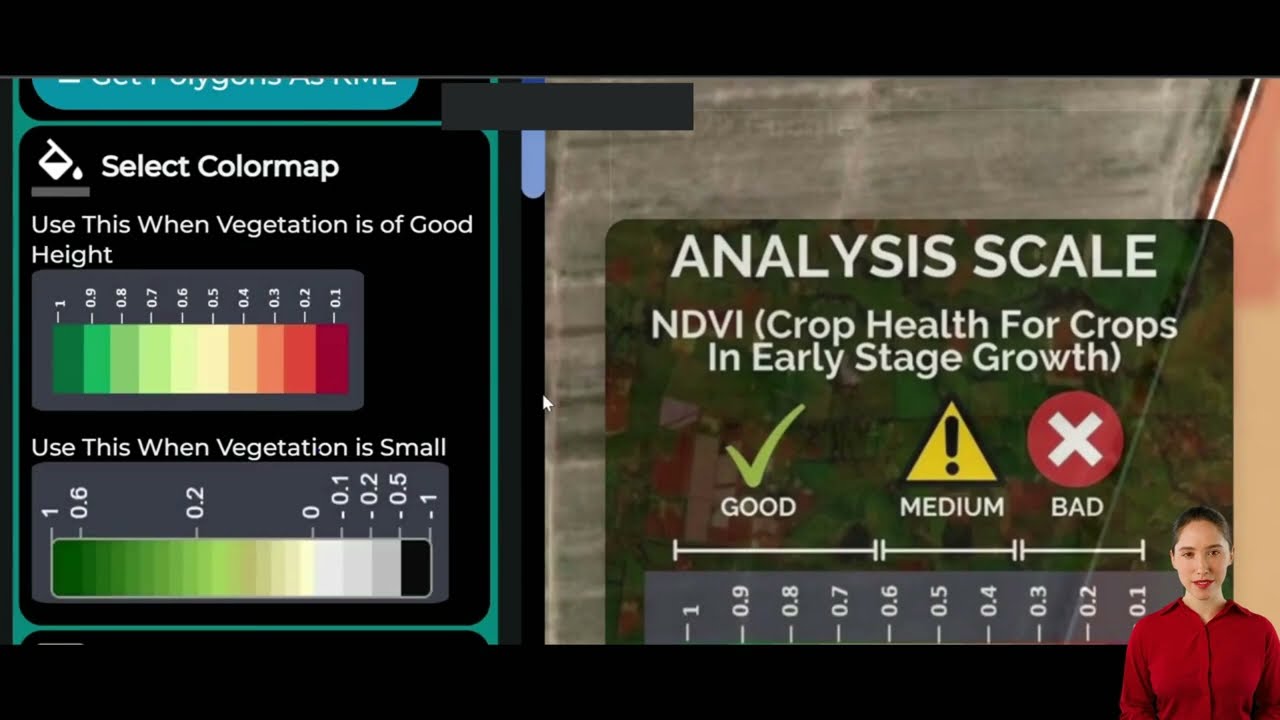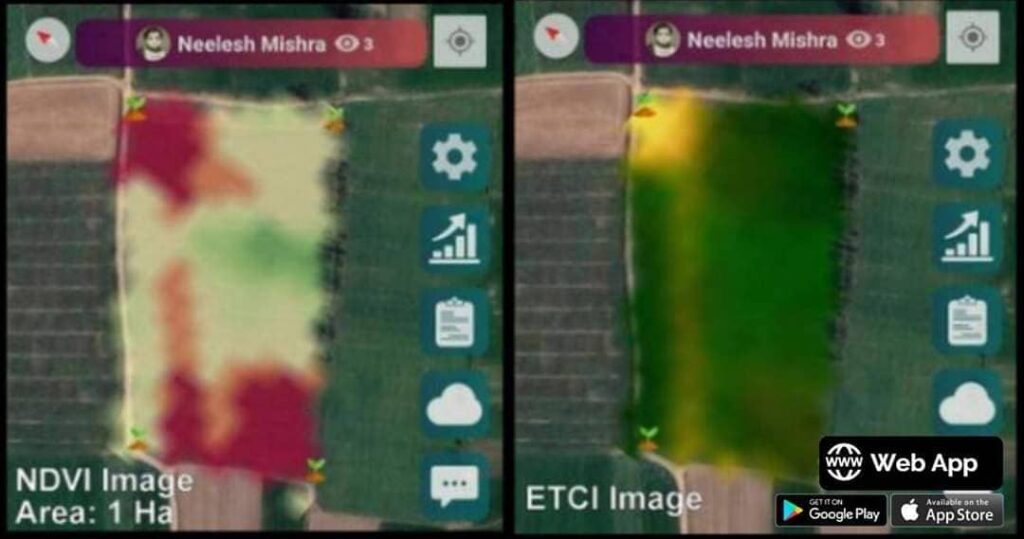Table of Contents
- Understanding Rhizoctonia and Its Impact
- Rhizoctonia Fungicide: 7 Shocking Management Hacks
- Comparative Management Strategies Table
- Integrated Pest Management (IPM) Strategies for Rhizoctonia
- Environmental Impact of Fungicide Use
- Farmonaut: Enabling Precision Rhizoctonia Management
- Frequently Asked Questions
Rhizoctonia Fungicide: 7 Shocking Management Hacks!
Rhizoctonia management has become a critical topic in modern agriculture and forestry. As a leading soil-borne fungus, Rhizoctonia—especially Rhizoctonia solani—poses significant threats to crops and forest seedlings globally. The disease pressure includes severe blights, root rot, crown rot, and foliar infections, leading to large economic losses if not managed responsibly and sustainably.
Through the integration of fungicides, cultural practices, and biological control measures, coupled with technology-driven insights from platforms like Farmonaut, we are better equipped than ever to sustainably reduce the impact of this pathogen.
In this comprehensive guide, we dive into the most effective, science-backed strategies for Rhizoctonia solani control, covering everything from best-in-class fungicides to innovative precision farming tools, environmental considerations, and practical hacks for immediate disease reduction.
Rhizoctonia Fungicide: 7 Shocking Management Hacks!
The management of Rhizoctonia demands a combination of science, sustainable practices, and smart farming tools. We present 7 innovative and effective management hacks that dramatically reduce the disease burden in agriculture and forestry landscapes, focusing on both conventional and next-generation solutions.
1. Double Down with Systemic Fungicide Applications
Fungicides for rhizoctonia form the backbone of immediate control measures. In crops such as sugar beet, rice, and soybeans, targeted use of systemic fungicides like azoxystrobin can dramatically lower root rot and crown rot incidence.
- Azoxystrobin: By inhibiting mitochondrial respiration in fungi, this molecule reduces Rhizoctonia root rot in agriculture when applied at the 6–8 leaf stage in sugar beet. Paired with resistant varieties, efficacy is maximized (see more: MSU Extension).
- Prothioconazole (Proline®): This SDHI fungicide disrupts fungal cell division and is highly effective for foliar blight in forest nurseries—especially for loblolly pine seedlings (USDA Research).
- Pyraclostrobin and Boscalid: Frequently used in combination for red maple seedling Rhizoctonia root rot, their consistent control comes alongside strong resistance management credentials.
Key Tip: Always rotate products with different modes of action to delay resistance development.
2. Biweekly Fungicide Application: Timing is Everything
For nurseries and seedling operations, adherence to a biweekly application calendar—particularly with prothioconazole and azoxystrobin—however, can mean the difference between lush, productive seedlings and widespread foliar blight.
- Forest Seedling Disease Management Hack: Research shows biweekly applications of Proline® significantly improve growth and appearance, compared to untreated controls (Read Study).
- Crop Program Hack: In Michigan sugar beet cultivation, a program-based approach (multiple, spaced applications) yields robust results and safer, more sustainable use of chemicals.
Pro Tip: Always follow recommended rates and timings for your specific crop and region.
3. Rotate Modes of Action to Prevent Fungicide Resistance
Fungicide resistance management is crucial to long-term disease suppression. Rhizoctonia can develop low to medium resistance against single modes of action—especially with repetitive use of the same product class.
- Alternate fungicides such as azoxystrobin, hexaconazole, thifluzamide, difenoconazole, and prothioconazole to delay pathogen adaptation.
- Combine fungicide application with biological controls and other integrated pest management strategies whenever possible.
Note: Monitor and adjust your program annually based on local resistance patterns.
4. Integrate Crop Rotation and Non-host Sequencing
Cultural practices for disease prevention are among the most sustainable tools against Rhizoctonia diseases.
- Crop Rotation: Alternating with non-host crops—for example, using wheat or barley before sugar beet—significantly reduces pathogen inoculum in the soil.
- Soil Preparation: Ensure soils are well-aerated, with good drainage, proper pH, and optimal planting densities to discourage Rhizoctonia spp. outbreaks.
- Resistant Varieties: Deploy resistant cultivars when available—especially critical in monoculture settings like rice and soybeans.
Maintain crop records and rotating schedules for maximum benefit and minimal Rhizoctonia impact. We recommend integrating records with advanced farm management platforms for precision guidance (see: Farmonaut Large-Scale Farm Management).
5. Leverage Biological Controls and AMF for Sustainable Suppression
Biological control of rhizoctonia—using beneficial microorganisms and arbuscular mycorrhizal fungi (AMF)—offers both disease reduction and sustainability. Studies show that AMF-rich soils suppress Rhizoctonia development and promote overall crop health.
- Bacillus subtilis and Trichoderma spp. are among the leading biocontrol agents recommended for direct soil and seed applications.
- Compatibility Alert: Popular fungicides like azoxystrobin do not harm AMF at recommended doses (Research), making biological-chemical combination programs feasible.
- Soil Health: Increase organic matter and reduce tillage to favor native biocontrol species.
Example: AMF can be introduced into forest nurseries or agricultural beds at planting—greatly enhancing both seedling vigor and resilience against root rot.
6. Optimize Fungicide Application: Targeted, Timely, Smart
Application timing and targeted delivery are keys to maximizing fungicide effectiveness—while reducing environmental impact of fungicide use and costs.
- Single vs. Multiple Applications: For sugar beet, one foliar application of azoxystrobin at the 6–8 leaf stage gives effective Rhizoctonia root rot control (MSU Guidance).
- Forest Applications: Biweekly cycles with prothioconazole permit fast-acting blight suppression in forest nurseries and loblolly pine beds.
- Precision: Use technology, such as satellite/Ai-based crop health monitoring, to guide where and when to apply, minimizing unnecessary treatments.
Resource: Leverage Farmonaut’s Jeevn AI Advisory System for tailored, data-driven crop protection advice!
7. Monitor and Protect Soil Health for Lasting Defense
Rhizoctonia survives in soil as sclerotia and thrives when the microbial balance is disturbed. Healthy soil naturally suppresses many diseases!
- Maintain organic matter: Apply composts, green manures, and maintain crop residues to enhance beneficial microbe populations.
- Reduce tillage: Minimizing deep soil disturbance preserves soil structure and helps keep pathogen levels lower.
- Test soil regularly: Understand the Rhizoctonia inoculum load and adjust management hacks accordingly.
-
Carbon Footprinting: Calculate and reduce your field’s carbon footprint to ensure your practices are not only disease preventive but climate-smart.
Learn how Farmonaut helps you track agricultural carbon emissions and promote true sustainability.
Comparative Management Strategies Table
To help make informed management decisions, we’ve assembled a side-by-side comparison of 7 key Rhizoctonia hacks. This table covers strategy type, brief description, estimated effectiveness, environmental impact, cost per acre, and a sustainability rating—perfect for quick, data-driven implementation!
| Strategy Type | Description | Est. Effectiveness (% Disease Reduction) | Environmental Impact | Cost Estimate (USD/acre) | Sustainability Rating |
|---|---|---|---|---|---|
| Chemical Fungicides (Azoxystrobin, Prothioconazole) | Systemic and SDHI fungicides applied based on crop stage and disease risk | 60–85% | Moderate | $35–65 | ★★★☆☆ |
| Fungicide Rotation (Multiple Modes of Action) | Alternating fungicide classes to limit resistance | 65–88% | Moderate | $40–70 | ★★★★☆ |
| Biweekly Fungicide Application Calendar | Scheduled, spaced fungicide applications in nurseries and seedling farms | 70–90% | Moderate-High | $50–75 | ★★★☆☆ |
| Cultural Practices (Rotation, Soil Prep) | Crop rotation, optimized planting, soil health management | 40–60% | Low | $8–25 | ★★★★★ |
| Biological Controls (AMF, Trichoderma) | Beneficial microbes and fungi for disease suppression | 30–45% | Low | $15–35 | ★★★★★ |
| Smart Fungicide Application (Targeted, Precision) | Using AI & satellite data for precise deployment | 55–80% | Low-Moderate | $28–55 | ★★★★☆ |
| Soil Health Maintenance & Carbon Management | Compost, reduced tillage, routine carbon tracking | 15–25% (additive) | Low | $3–12 | ★★★★★ |
Integrated Pest Management (IPM) Strategies for Rhizoctonia
The gold standard for long-term Rhizoctonia management is an Integrated Pest Management (IPM) approach. This involves weaving together chemical, biological, and cultural control strategies—minimizing losses and optimizing resource use.
Key Elements of Rhizoctonia IPM:
- Cultural Practices: Rotate crops, avoid susceptible host crops in direct succession, and manage irrigation to prevent waterlogging and excess soil moisture (see blight management in soybeans and rice).
- Biological Controls: Apply AMF and biocontrol fungi—especially effective in vegetable and forest seedlings (forest seedling disease management).
- Responsible Fungicide Use: Choose modes of action wisely, follow local recommended dosages, and avoid “calendar spraying” unrelated to real risk.
- Precision Monitoring: Use tech platforms to visualize disease hotspots and to precisely time fungicide applications.
- Training and Record Keeping: Keep full records on controls used, fungicide resistance management steps, and all applications/rotations.
By integrating data-led platforms such as Farmonaut, you can automate much of the scouting and disease prediction process, reducing waste, increasing yields, and saving costs. Explore Farmonaut Product Traceability for full audit trails from seed to market—a key to sustainable, high-value supply chain management!
IPM Implementation Example
In forestry and reforestation efforts in the United States, integrated programs combining orientation of sowing, fungicide program rotation, and nursery sanitation have provided substantial reductions in both Rhizoctonia foliar and root blight.
Environmental Impact of Fungicide Use
As stewards of the land, our responsibility extends beyond disease control to encompass long-term agricultural sustainability and environmental health.
- Soil Health: Excessive or improper fungicide use can disrupt beneficial microbial communities. Rely on recommended dosages and integrated practices to maintain balance.
- Water Quality: Follow buffer zone guidelines, avoid spraying near waterways, and choose less mobile products to reduce contamination risk.
- Biodiversity: Select fungicides with low non-target toxicities, use strict timing, and foster beneficial organisms through good cultural controls.
- Carbon Footprinting: Use sustainability tracking tools (Farmonaut Carbon Footprint) to measure and reduce the greenhouse impact of disease control on your fields.
Ensure that rhizoctonia management today does not compromise the environment for future generations!
Farmonaut: Enabling Precision Rhizoctonia Management
Farmonaut stands at the forefront of sustainable crop protection by offering satellite-based, affordable, and scalable farm management solutions. Through real-time NDVI crop health monitoring, resource optimization, blockchain traceability, and AI-powered advisory (Jeevn AI), we empower you to make informed agricultural decisions for effective Rhizoctonia control across diverse geographies.
-
Satellite Crop Health Monitoring:
Quickly spot problem areas and guide targeted fungicide application—minimizing cost and environmental impact. -
Blockchain Product Traceability:
Ensure that every control step from sowing to harvest is audited and transparent (See Traceability Features). -
Jeevn AI Advisory:
Receive personalized pest and disease alerts, including for Rhizoctonia root rot in agriculture, straight to your device! -
Fleet and Resource Management:
Use Farmonaut’s tools to coordinate timely sprayings and field crew logistics—making each application count! -
API Access for Developers:
Harness Farmonaut’s Satellite & Weather API to build custom field-level disease prediction or management tools. -
Scaling Solutions:
Farmonaut Large-Scale Farm Management is ideal for cooperatives, agribusinesses, and government forest/plantation programs focused on precision disease prevention. -
Crop Loan & Insurance Verification:
Use satellite certification to maximize your access to financing and insurance for protected crops.
With Farmonaut, every farm and forest operation—from smallholder to national forest administrator—can achieve trusted, scalable, and eco-smart Rhizoctonia control.
Frequently Asked Questions (FAQ): Rhizoctonia Fungicide & Management
What is Rhizoctonia and how does it impact agriculture and forestry?
Rhizoctonia is a genus of soil-borne fungi—most notably R. solani—responsible for serious diseases like root rot, crown rot, and blight across a spectrum of crops (rice, soybeans, sugar beet) and forest seedlings (foliar and root blights). These diseases can cause substantial losses in yield, seedling establishment, and reforestation success.
Which fungicides are most effective against Rhizoctonia?
Azoxystrobin and prothioconazole (Proline®) are among the most effective systemic fungicides for Rhizoctonia solani control. When used as part of a rotation with other modes of action (such as thifluzamide, hexaconazole, pyraclostrobin, boscalid), sustained disease suppression and reduced resistance risk are observed.
How can we prevent fungicide resistance in Rhizoctonia?
Preventing resistance involves rotating fungicide classes (different modes of action), avoiding repetitive use of a single product, and integrating non-chemical controls such as biological and cultural practices. Record-keeping and monitoring of disease pressure are vital for adapting your strategy to local resistance trends.
What are cultural practices for effective disease prevention?
Cultural controls include rotating with non-host crops (e.g., barley, wheat before sugar beet), optimizing soil conditions (drainage, pH, tillage), using resistant varieties, and managing planting density and sanitation to reduce initial Rhizoctonia pressure.
How is technology helping in Rhizoctonia management?
Tech platforms like Farmonaut provide real-time satellite imagery, AI-powered advisory (for fungicide application or cultural adjustments), traceability tools, and carbon footprint monitoring. This enables precision, economy, and greater environmental responsibility in every decision.
What is the sustainability rating of each management approach?
Biological controls and cultural practices offer the highest sustainability (rated 5/5), while chemical fungicides—especially those properly rotated and targeted—rate moderate to high (3–4/5 stars). All methods are best employed in combination, tailored to the specific crop, climate, and disease pressure of your region.
Conclusion
Rhizoctonia management is not a one-size-fits-all operation; it is a symphony of chemical, biological, and cultural interventions orchestrated for the health of your field, forest, and the planet. By adopting these 7 Rhizoctonia fungicide management hacks, incorporating advanced farm management tools, and staying committed to environmental stewardship, we can achieve lasting disease suppression, higher yields, and true sustainability.
As you implement these integrated pest management strategies, remember: the future of farming and forestry lies in precision, responsibility, biology, and data-driven action. Together, let’s root out Rhizoctonia—sustainably!
Ready to take the next step? Access Farmonaut’s platform today for tailored disease alerts, carbon tracking, and more!





















